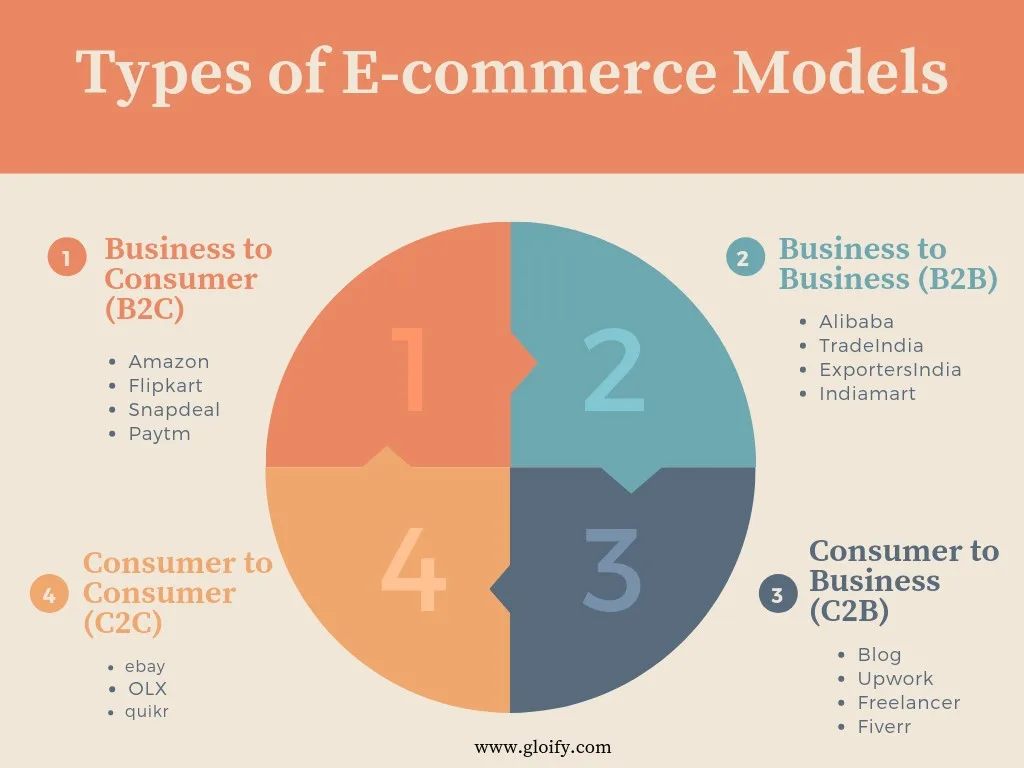Syllabus: GS3/Economy
Context
- Recently, the Union Trade Minister stirred up debate on India’s e-commerce sector, instead of celebrating its exponential growth, he expressed concern.
About Status of the E-commerce Market in India
- India, with its rapidly growing digital economy and expanding internet user base, is on the brink of a massive transformation in its retail sector.
- At present, the e-commerce market in India is valued at $70 billion, which accounts for around 7% of the nation’s overall retail market.It is predicted to grow to a staggering $325 billion, and the country’s digital economy is expected to reach $800 billion.
- The number of online shoppers in India is projected to increase with a compound annual growth rate (CAGR) of 22% to 88 million in rural India and 15% to 263 million across urban India between 2019 and 2026.

- It is expected to lead to India surpassing the US as the second largest online shopper base in one to two years.
Factors Driving Rise of the E-commerce
- India currently boasts the second-largest internet user base in the world, with over 900 million users.
- By 2030, it is expected to rise to the third position in the online retail industry.
- This growth is driven by increasing internet penetration, with around 87% of Indian households expected to have internet connections by 2025.
- The duration of internet access through mobiles has seen a 21% rise compared to 2019.
- Indian consumers with annual incomes ranging from INR 2.5 lakh to INR 10 lakh will be responsible for driving nearly half of the growth in India’s $300 billion e-commerce market by 2030.
- The growth of e-commerce in India has been done by the advancement of efficient logistics and supply chain networks. Government initiatives, like the National Logistics Policy, have streamlined last-mile deliveries, significantly improving logistical efficiency and cost-effectiveness.
- E-commerce offers consumers the ease of shopping from their homes or on the go, saving both time and effort. For example, food delivery platforms like Zomato and Swiggy have become incredibly popular due to this convenience.
- Invest India predicted a significant increase in the number of households engaging in e-commerce transactions, from 60-70 million in 2022 to 120-130 million by 2030.
Challenges Associated with E-commerce Market in India
- Platform Neutrality and Fairness: There are concerns about lack of platform neutrality, unfair platform-to-business contract terms, exclusive contracts between online marketplace platforms and sellers/service providers, platform price parity restrictions, and deep discounts.
- Taxation: The provisions on carry-forward of losses need to be more accommodative of business restructuring, and withholding tax norms need more clarity.
- Inclusion of Small and Medium Enterprises (SMEs): SMEs often find it challenging to participate in the e-commerce ecosystem due to the need for separate infrastructures for different platforms, distinct terms and conditions of each platform, and the costs associated with these.
- Digital Infrastructure and Internet Penetration: The robustness of digital infrastructure is crucial for smooth and seamless online transactions.
- Any disruption in the digital infrastructure can lead to transaction failures, affecting the trust and confidence of consumers in e-commerce.
- While internet penetration is increasing in India, there is still a significant portion of the population, particularly in rural areas, that does not have access to the internet.
- Regulatory Challenges: E-commerce businesses in India also face regulatory challenges including issues related to data protection, consumer protection, taxation, and other legal and regulatory compliances.
Related Initiatives to Overcome Challenges
- Policy Support: 100% FDI is allowed in B2B e-commerce.
- 100% FDI under the automatic route is permitted in the marketplace model of E-commerce.
- Government e-Marketplace (GeM): It has facilitated government procurement, crossing an impressive INR 4 Lakh Cr in GMV.
- Open Network for Digital Commerce (ONDC): It aims to provide equal opportunities to MSMEs to thrive in digital commerce and democratise e-commerce.
- Other major initiatives include Digital India (to transform India into a digitally empowered society and knowledge economy), Skill India (to train people in different skills), Startup India (to build a strong ecosystem for nurturing innovation and startups in the country), Make in India (to encourage companies to manufacture their products in India), Innovation Fund (aimed at encouraging entrepreneurship and innovation in the country), and BharatNet (to grow rural broadband penetration) etc.
Way Forward (Policy Shift: Striking a Balance)
- Stricter Regulations: The government is contemplating stricter regulations for e-commerce players. While growth is fantastic, it shouldn’t come at the cost of the well-being of others. There is a need to balance growth with consumer safety.
- Fair Play and Transparency: The Union Trade Minister wants foreign direct investment (FDI) and technology to thrive but insists on honesty and transparency. Both online and offline businesses should play by the same rules.
- It’s about finding that sweet spot where progress doesn’t compromise our health and social fabric.
Conclusion
- The rapid growth of India’s digital economy, coupled with the increasing internet penetration and the rise of the mass consumer segment, is set to propel India to become the world’s third-largest ecommerce market by 2030.
- It presents a tremendous opportunity for businesses and investors alike, making India one of the most attractive markets for ecommerce in the world.
Previous article
Guidelines for Seaplane Operations in India
Next article
Performance Review of Regional Rural Banks (RRBs)